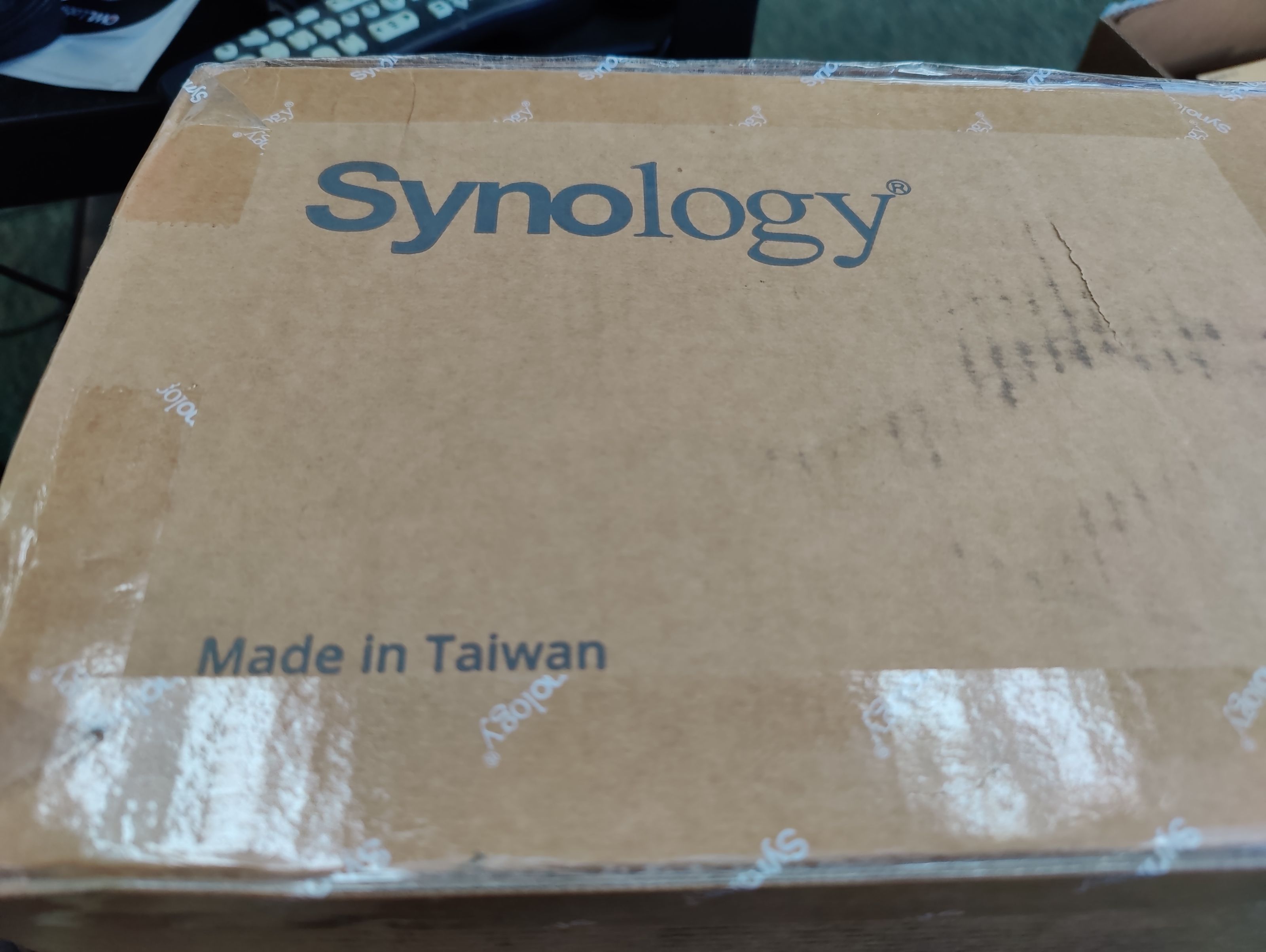
One of the things I love about my job is the fact that I pretty much have free reign over the budget of my department. If I see some shiny and new technology that I think would fit well in our environment, I can just go ahead and buy it (within reason).
It really gives @iikrypticsii and I the feeling that any day could be Christmas when a new package is delivered for us to unbox. That was definitely the case with our new Synology Backup Appliance.
I actually can't tell you the number of cold calls and emails I have gotten from vendors wanting to sell me the Synology Solution for backing up our Google Workspace or Office 365 instances.
It was fairly easy to ignore those contact attempts because I felt the Synology solution was probably too expensive, and backing up my cloud data wasn't a priority for me. It wasn't until we went to a professional development conference and we listened to one of our colleagues talking about Synology that things really started to click.
I talked to @tarazkp a while ago about records retention and how important that is in the public school setting. I think for some documents the requirements are something like 99 year. Additionally, bad actors are starting to target public education pretty heavily with ransomware and just because your data is in the cloud, that doesn't mean it is safe.
I kid you not, while the guy was still talking I jumped on my preferred vendors website and when I found out I could have a full solution for less than $3000 USD, I was sold. As in I put in the PO and order on the spot before the presentation was even finished!
We are a fairly small district so we actually don't have a ton of data. Less than a couple of terabytes to be exact. Despite that fact, I wanted our device to be robust enough to last a while, so I went a little big.
- Synology Rack Station 820+ : $1005.00
- Four 8 TB Synology Drives : $1540.00
- 10 GB NIC Upgrade : $276.00
- 8 GB Memory Upgrade: $199.00
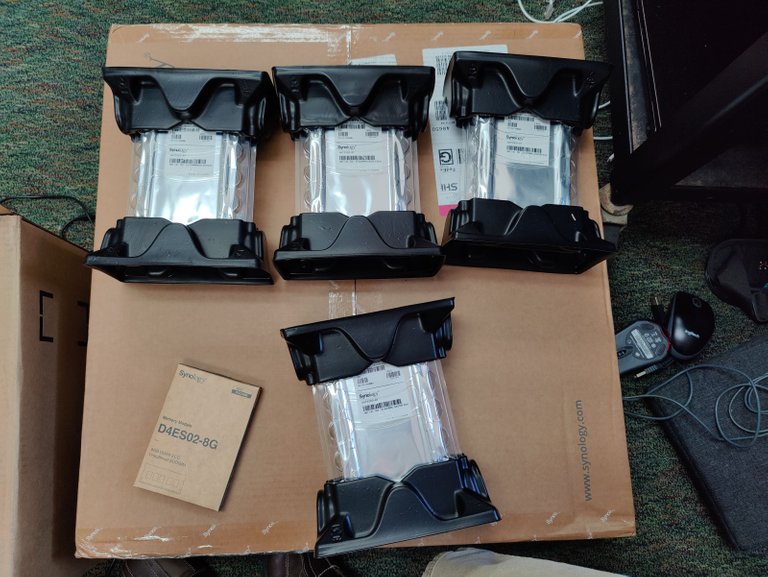
That gives me a grand total right around $3000, not bad for an enterprise backup solution. If you are interested, they have even smaller units that would fit nicely into a home office environment. If you do a lot of stuff in Google Docs or Office 365 it is worth looking into.
The chassis itself doesn't cost too much, as you can see the amount of money you spend really depends on how big of drives you need to buy. The 10G NIC is backordered right now and honestly, is probably overkill for the amount of data I am going to be moving, but I figured go big or go home and I ordered it anyway.
I think I also could have gotten by with the base of 2 GB RAM, but we know that bigger is always better when it comes to RAM, so I didn't want to skimp.
Something I should note: The Synology does a lot more than just backups (I will get to that in another post), so if you plan on using it for those other things, get as much RAM as you can afford.
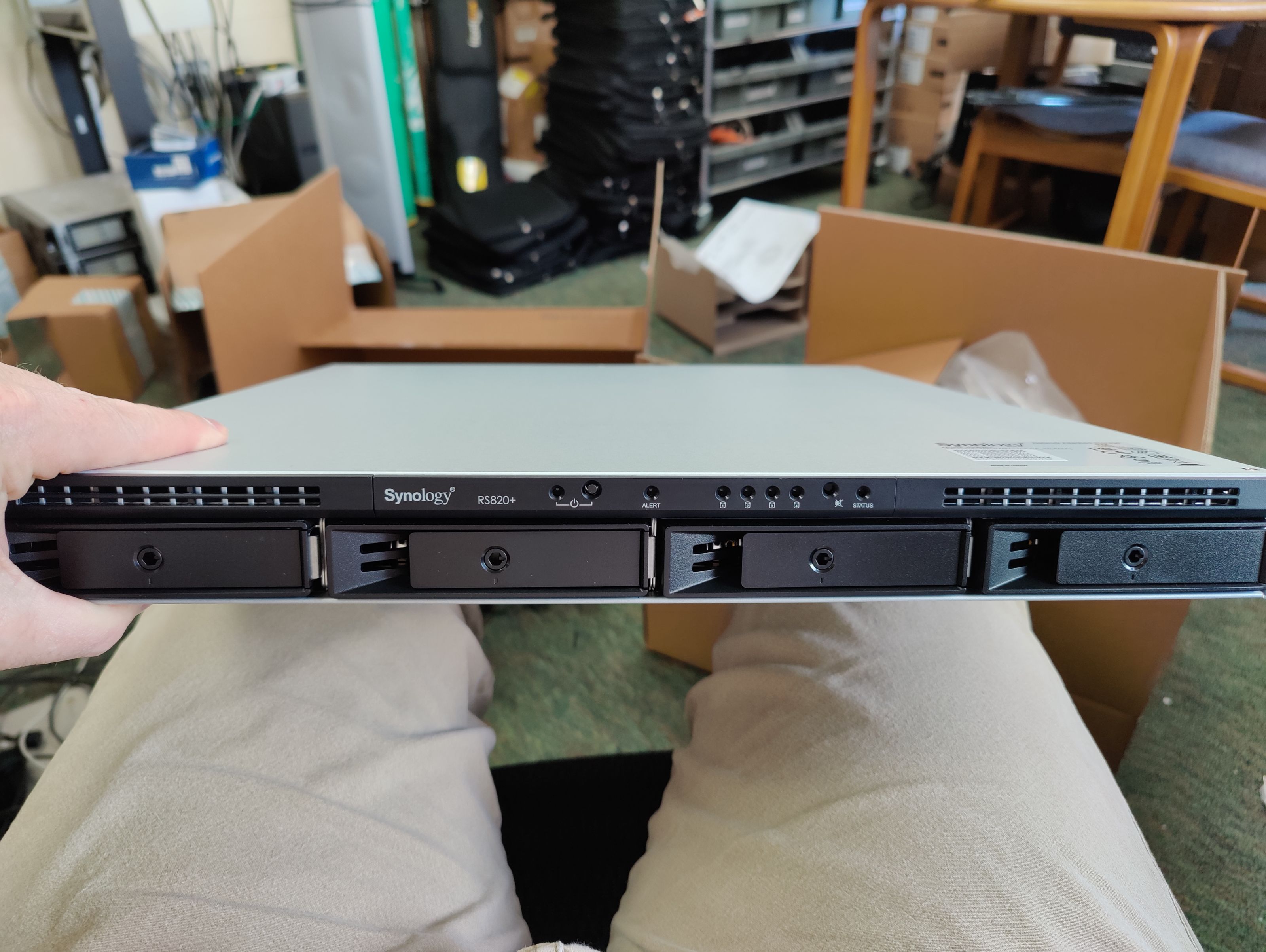
As you can see, the chassis is pretty simple. Again, we didn't have a ton of data to backup, so I went with the 1U form factor that allows me to insert 4 hard drives. I expected the device to be as long as some of my traditional servers, but that wasn't the case. It is actually closer to the form factor of a large switch.
You could easily fit this in a two post rack and not need to worry about it too much. I should mention that once you add the hard drives to the front, it does add a bit more weight to the device.
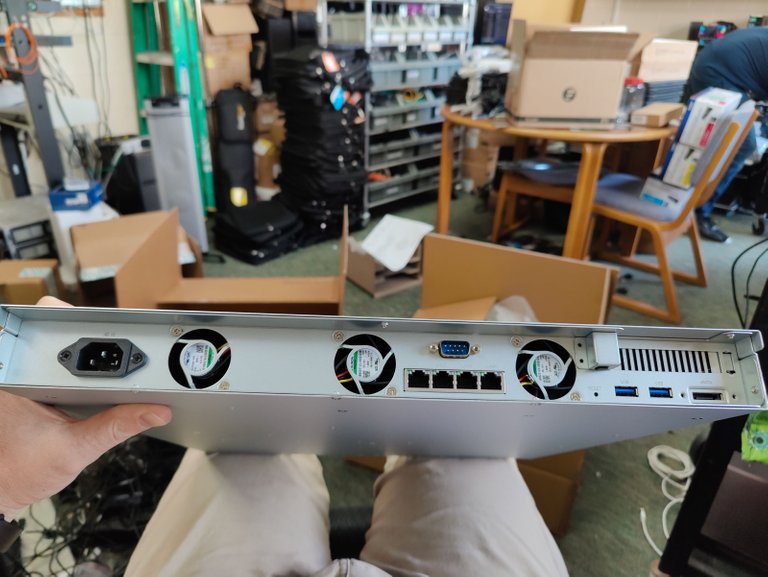
The back is pretty simple too. I would have liked a redundant power supply, but you likely have to upgrade to one of the 2U units to get that. With four NIC slots, I expect you can bond them together or set them up on separate subnets/vLans, but I didn't get into any of that.
There is a console port but no video out. All configuration of the device is done via command line or web interface similar to a switch.
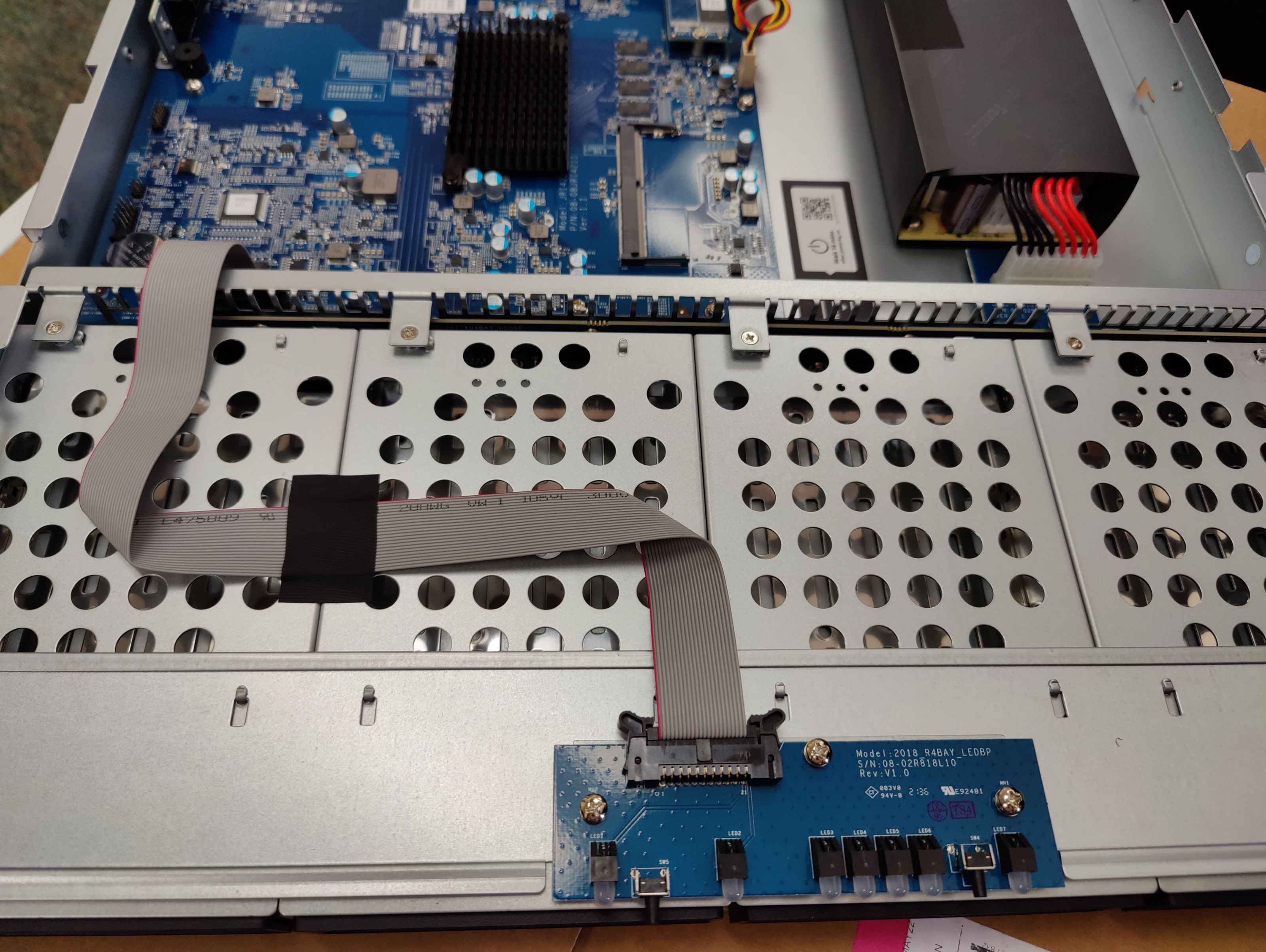
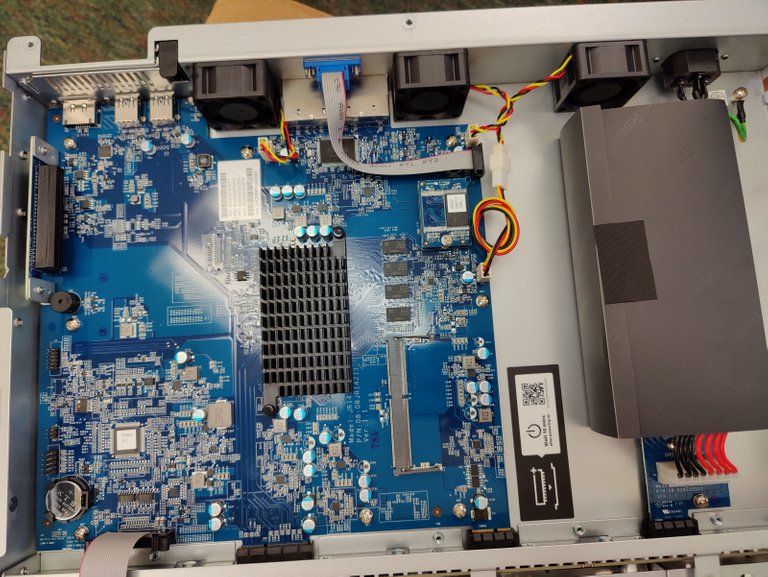
It's actually a pretty sparse piece of hardware on the inside. I expected there to be more "meat" to it, but I guess if they can make a computer the size of a raspberry pi or a smartphone, it doesn't take much to run this thing.
You can see the spot where we needed to add the RAM module in the lower part of the second picture. There is also a riser card on the left hand side that I am assuming will accommodate the 10G NIC when we get it in.
There is an M2 drive you can buy to help with caching since the hard drives are the traditional mechanical style, but it appears the model I purchased doesn't have a spot for that. I am guessing it is something you can add with the bigger units.
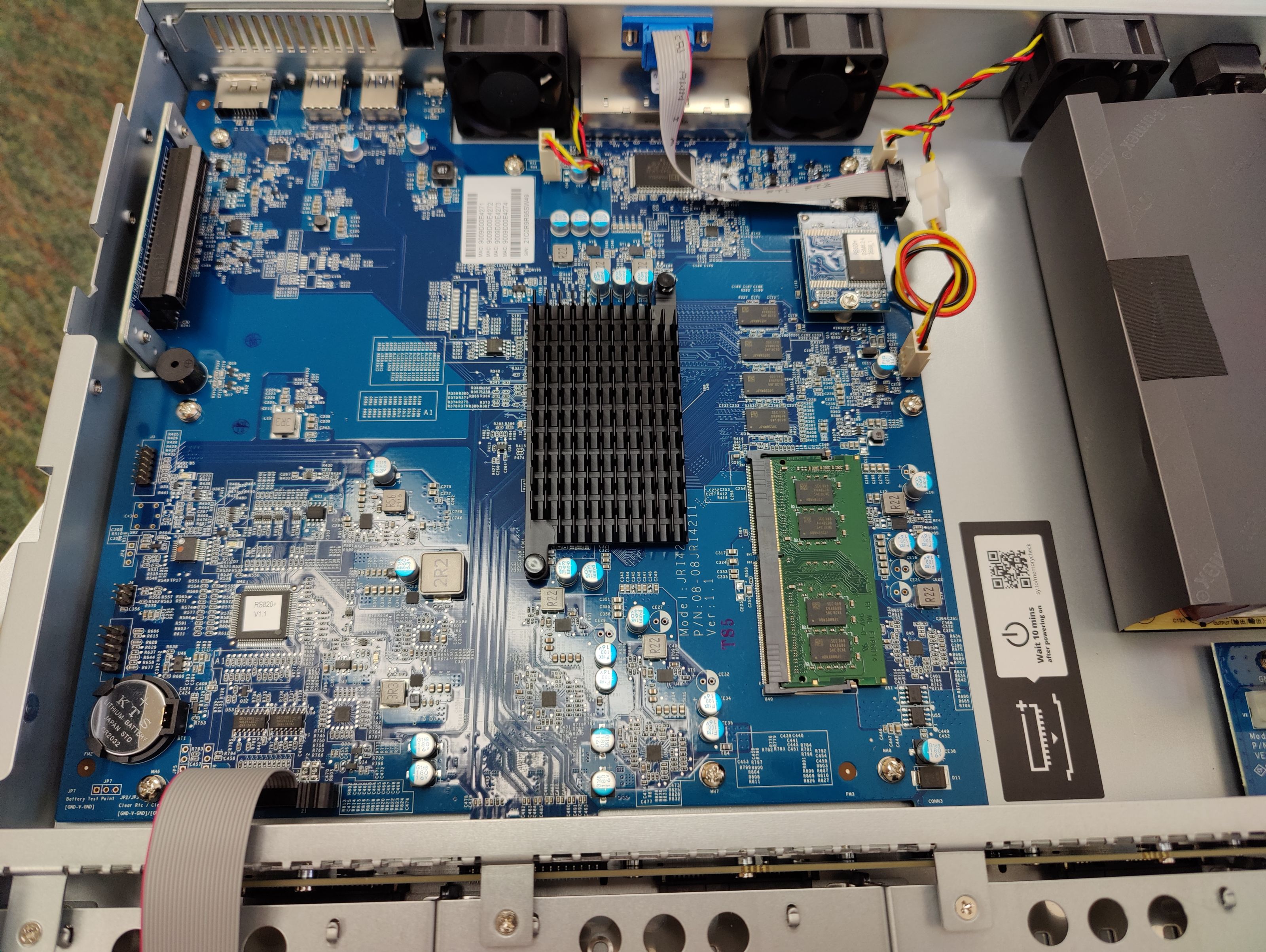
As much as I wanted to "get my hands dirty", I let @iikrypticsii have the privilege of adding the RAM module. I also let him put the hard drives in their cradles so they could be slid into the chassis.
Maybe it is just me, but I kind of wish the RAM module had been a piece of blue circuit board. I know no one will ever see it besides us, but it just kind of bugs me that the RAM is green while the rest of the device is blue.
I know, I'm a bit ridiculous!
The process of getting the unit ready for power was pretty painless. Especially if you aren't worried about adding extra RAM or any of that. I think a casual user could have it unboxed and plugged in within a matter of minutes.
Check back next week when I go through the process of setting the device up!
Sports Talk Social - @bozz.sports

Posted with STEMGeeks




